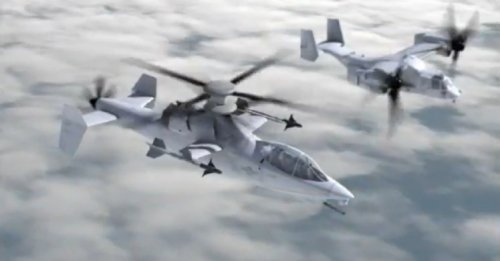TaiidanTomcat said:
Darn those Marines and their cutting edge programs! If only they would just be satisfied with the same old junk that wouldn't work well in future conflicts!!
I actually used to be a supporter of EFV, but that was a very long time ago -- about I think 2004-2005. Since then, things have changed dramatically, in regards to amphibious assaults.
Transnational terrorist groups (Hizbollah) now have anti ship missiles, which have actually struck warships (granted, the Israeli Navy forgot to turn on their EW system...)
Amtracs made some sense in the 1940-1960 time frame, when technology from getting from ship to shore was still very immature; and it provided a "drive on" capability that other more conventional landing craft such as Mike Boats couldn't match; regarding hitting a non-optimal beach slope, driving on, and continuing inland.
Since then, a lot of things have changed:
A.) Aviation assets have exploded -- why do we need to land on the beach, when we can fly over it with a helicopter?
B.) Non-Conventional Landing Craft have entered service -- LCAC can land on beaches which would hang up a conventional 'drop the ramp' landing craft, and what's more, it can even continue inland for several miles before dropping it's load.
Given that an Amtrac needs to float, it has to have a large volume for flotation, which results in a very large vehicle which will be inherently lightly armored. This is bad since we live in a world where the 2A42 30mm Autocannon and it's ilk have had time to proliferate amongst light combat vehicles.
Additionally, due to the huge size of the vehicle in order to make it float, it's now unusually vulnerable to very large IED attacks, in a way a more conventional AFV isn't. Some of the worst casualty counts during the Iraq conflict were when USMC LVTP-7s got blown to pieces by IEDs.
Given a world in which LCAC exists and a follow-on to it is in the planning and development phases; it makes more sense to have a heavily armored non-floatable IFV carried ashore and deployed via LCAC than it does to swim ashore from 25 miles out.
Yes, there's a small niche for amphibious APCs in the world, and the USMC used their LVTP-7s to some effect during Operation Iraqi Freedom by crossing several rivers under light fire to secure beachheads...but again, a helicopter-borne unit could have also secured said river crossings supported by helicopter gunships.
Would you care to compare the performance of S-92s to V-22s? because I really don't think you can compare tilt rotor performance to other conventional helicopters but it would be fun to watch ya try.
Actually, I have done that in the past.
While the V-22 has slung load 10 to 15 klbs at speeds of 200+ knots for demonstrations, those aren't demonstrative of actual sustained performance.
The June 1986 SAC for the MV-22/CV-22/HV-22 says that the do not exceed speed with slung loads is about 130 knots.
That's only about 30 knots or so faster than a CH-46E with a slung load. So where does the V-22's enormous advantage for cargo transport come from?
The CH-46E can only slingload or transport about 4,000 pounds out to a combat radius of 50 nautical miles, whereas the June 1986 SAC for the V-22 gave it's slung load payload as 8,300 lbs for the same combat radius.
This is an advantage much reduced with modern helicopters -- the UH-60L can slingload 9,000 lbs to 50 n.mi radius; the H-92 can do 10,000 lbs to the same radius, and both can do it with a slung load cruising speed about 10-15 kts higher than the CH-46E.
The V-22's 200+ knot average cruising speed in the troop transport role for amphibious assault seems uncrushable, but in reality...a lot of time is wasted just waiting -- for the V-22A's design reference mission of two 50 n.mi roundtrips for troop transport in the June 1986 SAC, fifty-five minutes are spent 'loitering' at the amphibious assault ship either after taking off or waiting in the landing pattern.
Also, there's no equivalent support unit that can escort a V-22 at it's high cruising speed, all the more so that the self-defense capabilty of the V-22 was severely neutered during development, and even with the new gun turret coming online in the next couple of years, that'll cut deeply into the V-22's payload capabilities...
The big problem, when you get down to it is that the V-22 just doesn't have a crushing enough edge to justify it's cost of 2-3 times as much as a conventional transport helicopter such as the H-92.

